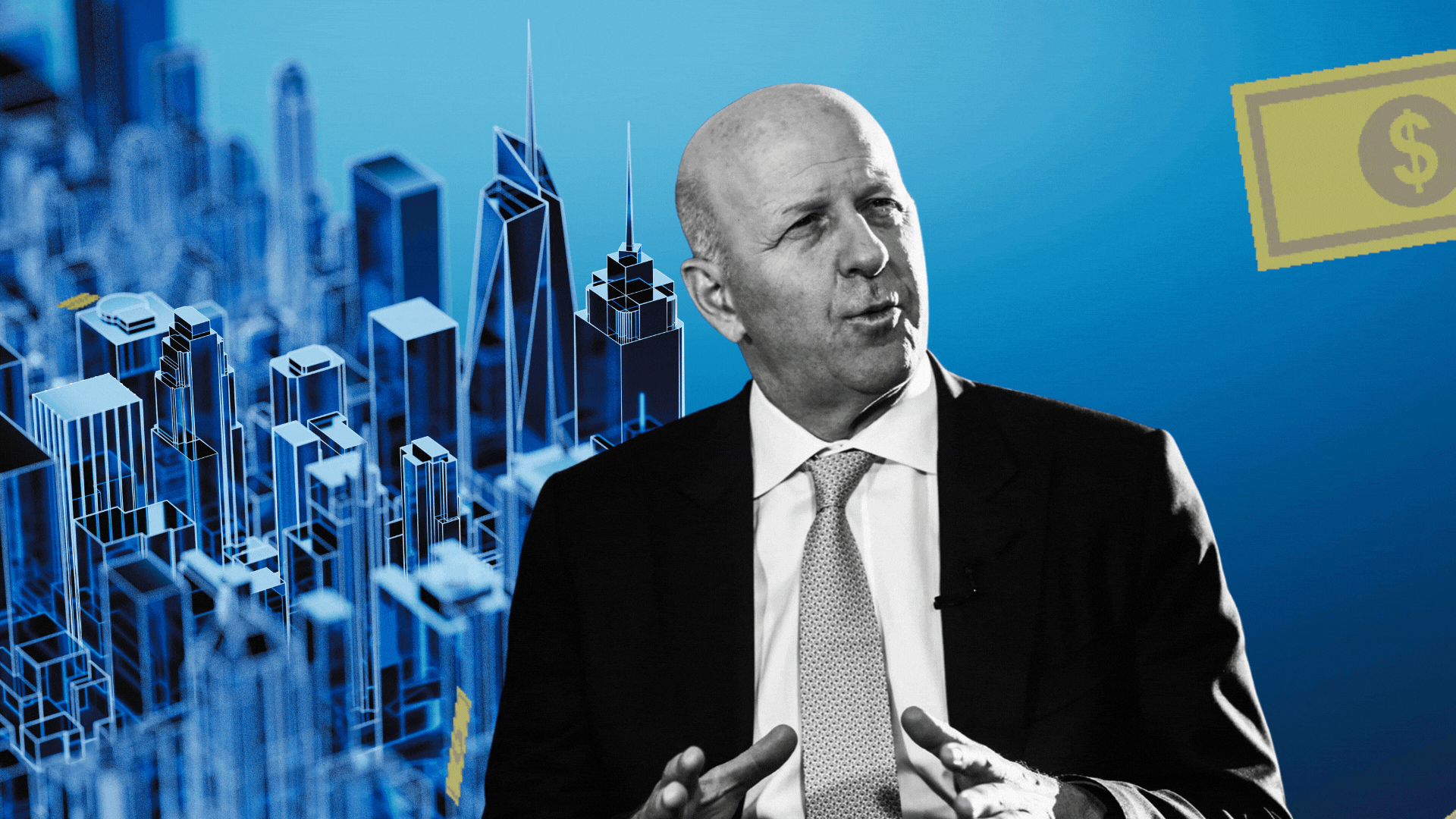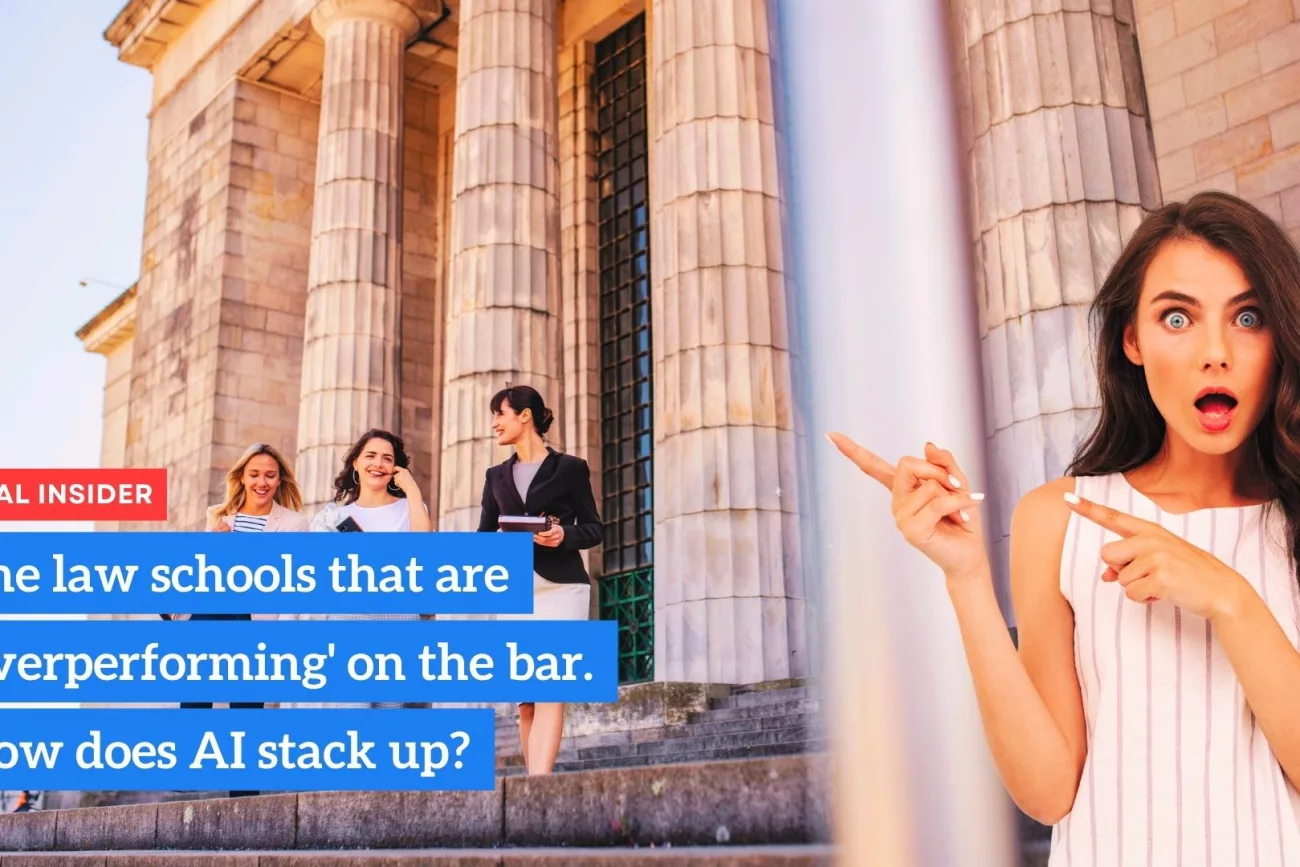
Key Points:
- Goldman Sachs’s claim of AI taking over nearly half of legal tasks has been misinterpreted by various media outlets.
- Goldman’s report includes AI’s potential impact across all industries, not only the legal field.
- The methodology and underlying data used by Goldman Sachs to reach this claim are questionable and lack clarity.
- Goldman Sachs may have a potential conflict of interest due to their investments in AI technology.
🤖⚖️ Rise of the Machines: The Courtroom Standoff – Barristers versus AI? 🎩⚖️
Did that title just spin your wig a tad off-kilter? Well, hold on to your legal briefs, newbie barristers, for there’s a storm a-brewing!
On March 26th, 2023, a report surfaced that put the legal fraternity on trial. The prosecutor? Goldman Sachs, the kingpin of finance, forecasting that AI may soon occupy nearly half the courtroom.😱 Even more startling – the legal vanguard seemed to accept this grim prophecy with a resounding meh. Yours truly included. But as the vendor-chorus of AI started to crescendo, the litigator in me stirred. Time to cross-examine this edict!
🕵️♂️ Exhibit A: The ‘Chinese Whispers’ of Media
Perusing the media response to this report was like flipping through a law student’s first contract draft. Law.com, went on to suggest that AI would usurp 44% of legal tasks. Meanwhile, the Observer alluded to 44% of legal positions on the guillotine. The NY Times, never one to be sidelined, prognosticated 44% of legal work teetering on the AI brink.
Confused? You should be. After all, aren’t these three distinctly different interpretations? You bet your gavel they are!
🕵️♀️ Exhibit B: Are We Playing Judge for the Wrong Defendant?
Okay, let’s step off the gas pedal a bit. Goldman Sachs might not be the puppet master here. Journalists may have spun the report in an eyebrow-raising direction. But don’t get too comfy in your judgment seat, because Goldman’s report, under the microscope, appears a little…flimsy.
Turns out Goldman Sachs isn’t finger-pointing at just the legal industry. The report delves into AI automation’s prospects across *all* U.S. industries. The legal sector was merely the runner-up in this doom-and-gloom pageant. Interestingly, “Office and Administrative Support” bags the dubious honor of ‘most threatened.’ “Business and Financial Operations” and “Management” also make the cut.
However, Goldman’s research trip stumbled somewhere. Perhaps the report should’ve been christened “Share of Professions Exposed to Automation by AI: US”. But then, the highlighted column should read “All Professions”, not “All Industries”, right?
🕵️♂️ Exhibit C: The Mystery of Methodology
So how did Goldman Sachs conjure this ominous 44% figure? By suggesting that a quarter of all current work tasks in the U.S. might eventually bow to AI. The timeline remains as hazy as a murder mystery’s climax, but there’s a hint on page 5: “AI is well-positioned to advance rapidly and grow in scale in the coming years.”
🕵️♀️ Exhibit D: Decoding the Data Deception
The plot thickens with the underlying data. Using the O*NET database, Goldman Sachs classified 13 of 39 work activities as AI bait. These include “Getting Information”, “Processing Information”, and “Analyzing Data or Information”.
However, Goldman’s unique “Importance- and Complexity-Weighted Average” method, used to measure AI’s job potential, is as clear as a heavily redacted document. Add to this the cryptic definition of what constitutes the “legal profession”, and we’re in murky waters indeed.
🕵️♂️ Exhibit E: A Jury of Few
Delving deeper into the O*NET data, we discover a meager panel of 165 legal professionals. To all budding statisticians out there, that’s a puny sample size for a declaration about an entire profession.
🕵️♀️ Exhibit F: A Conflict of Interest?
Twist ending alert! Goldman Sachs has a horse in this AI race. Despite their investment portfolio remaining enigmatic, it’s plausible they’ve poured serious money into Generative AI. A claim like this could give their investments a tidy little windfall.
The Verdict
The irregularities in this courtroom drama compel us to deliver a verdict. It seems Goldman Sachs may have played their AI card prematurely, possibly with an eye on their financial gains. Is the real headline hiding in plain sight?
“44% of Investment Bankers Hope to Cash In on Barrister’s Fear of AI”.
Phew, quite the legal roller-coaster ride, right? Are you fired up, ready to join the debate? If yes, then sign up for our newsletter 📨. Let’s keep this dialogue alive, question the system, and most importantly, hold our ground against those ominous robots. 👊🤖 Let’s show them barristers have an irreplaceable flair for justice. ⚖️🎩
🚀🤖 AI Takeover Alert: Get Ready to Kiss 23.5% of Your Legal Revenue Goodbye! 💼📉
Talk about a real-life courtroom drama! It’s got suspense, conflict, and more plot twists than a James Patterson thriller. You might just be a lawyer-in-the-making, but you’ve landed a starring role in this AI-fueled saga. Ready to unravel the mystery?
We’re going to need a better boat. The infamous Goldman Sachs’s “44% of Legal is evaporating” report has been making waves. But upon closer inspection, it’s less of a tsunami and more of a kiddie pool splash. The study’s sample size seemed as pitifully small as a mouse in a jungle, and the caution around Goldman’s research had the precision of a bull in a china shop.
Cue suspenseful music! We embarked on a daring quest for more tangible and actionable data to ascertain the real impact of Generative AI on the mighty law firms.
🔎Unearthed Secrets from the LexisNexis CounselLink Data Mine🗄️
Goldman’s survey, with its abstract blur of work tasks, resembled a Picasso more than a comprehensive study. Confusing terms like “Identifying Objects, Actions, and Events” and “Scheduling Work and Activities” painted a puzzling picture. 🖼️
We sought to bring clarity to the chaos by sourcing data related to time entries featuring the buzzwords “Draft” or “Review”. These words seemed likely to represent a significant chunk of legal tasks where Generative AI could step in. 🦾
We boldly explored the murky depths of law firms’ time entries for corporations using CounselLink e-billing. The results? Our chosen keywords appeared in a whopping 39% of entries. The data offered an intriguing peek into the automation potential for Generative AI.
We compiled data from 10 anonymous CounselLink clients of various sizes and sectors. This data set, while compact, provided a more concrete representation of legal work compared to Goldman’s vague, nebulous survey.
🔬Reality Check: AI’s Impact – Dream vs Reality🧪
The doom-and-gloom crowd might worry that Generative AI will devour all 39% of “Draft” and “Review” tasks. But let’s be real – even AI’s most devoted disciples wouldn’t claim AI will obliterate every single one of these tasks. More realistically, AI could trim around half of these tasks’ hours, equating to a hefty 20% cut. An attention-grabbing figure, for sure, but hardly the cataclysmic “end times” scenario stirred up by some fear-mongering headlines.
💲Show Me the Money: The Real Cost of AI💰
Billable hours are crucial, but let’s get to the meat of the matter. The million-dollar mystery – one that could cause many a law firm partner a sleepless night – is “How will Generative AI impact my bottom line?”
Much like their time entry counterparts, “Draft” and “Review” tasks accounted for a hefty 47% of all fees. By our guesstimate, if Generative AI can eliminate half of this work, law firms could face a sobering 23.5% drop in revenue in the near future.💔📉
🔄 Plot Twist Alert: Role Reversal 🔀
Here’s where things get even more interesting. Generative AI is more likely to encroach on tasks performed by associates rather than partners. Partners, don’t start popping the champagne corks just yet!🍾🚫 If Generative AI affects associate work more heavily, the year-end profitability pie, from which partners take their share, might shrink considerably.
There you have it! The AI plot thickens. Will our legal heroes adapt and overcome or fall victim to the AI revolution? Stay tuned! And don’t forget to subscribe to our newsletter for the latest updates from the thrilling world of law and AI! 🚀💌
AI: An Unequal Opportunity Offender? 🌍
Dramatic drumroll, please 🥁: The AI revolution isn’t the Robin Hood of the legal sector. No, it’s not all about pilfering from the partners’ pot and bestowing benevolence on the associate class.
Here’s the lowdown:
Our beloved Generative AI, has an affinity for gobbling up simple tasks, the sort that are the lifeblood of our eager associates.
When it’s crunch time, partners clutch their billable hours like a reality TV star clings to their last shreds of notoriety.
But fret not, sharp legal eagles! We’re striding in, armed with our trusty profitability analysis, to take apart a typical legal transaction – minus any AI influence.
The Anatomy of an M&A Deal, sans AI 🎩📚
Our probe light falls on a standard M&A transaction, tackled by a league of extraordinary legal talent: an Equity Partner, a battle-hardened 17-year service partner, and a gaggle of associates with 10, 7, and 3 years of experience, respectively.
Brace yourselves: The Estimated Annual Profit Per Equity Partner (PPEP) tallies up to a cool $1,000 X 1200 hrs = $1,200,000. Impressive, no?
Bear in mind: we’re dealing with a constellation of fickle variables here (billable rates, realization rate, expenses per timekeeper). They could wildly shuffle these numbers. For the sake of an apples-to-apples comparison, let’s hold our baseline steady.
Attention, law firms: Try this exercise on for size, and let’s swap notes!
To Leverage or Not to Leverage? That is the Question ⚖️
“Workers work. Owners benefit.” It’s an age-old adage.
Now, prepare for a mind-bending paradox that makes Schrödinger’s Cat look like a predictable pet. The big-ticket partners aren’t the ones filling up the piggy bank. The underdog non-partners are!
Enter the realm of Leverage: the ratio of non-partner hours to partner hours. In our baseline, it’s a respectable 60%.
Tossing AI into the Blender 🤖
When our baseline takes a spin in the AI whirlwind, it comes out with a slight windswept look – a 5%/20% reduction in partner/non-partner billable hours.
The fallout? Grab your hard hats:
Total hours: Trimmed by 75 (-15%)
Total Revenue: Snipped by ~$30k (-12%)
Profit in Dollars: Trimmed by ~$13k (-10%)
PPEP: Tumbled to ~$1.1M (-8.33%)
Leverage: A touch softer at 55% from 60%
The Leverage Labyrinth ⚔️
In a plot twist worthy of a legal thriller, better leverage doesn’t always mean fatter profits. Apply our AI scenario to a model with improved leverage, and the PPEP takes a nosedive to ~$1.2M, a heart-stopping 8.5% decline!
A Dicey Dance of Leverage and AI 💔
Let’s hypothesize our baseline starts with a leverage of 55%. We sprinkle in some Generative AI for added spice. The outcome? PPEP plummets to a sobering $900k. A 5% lower starting leverage triggers a not-so-sweet 15% dip in profitability!
Unleashing the AI Storm: What Could Be? 🌪️
What if our AI model is erring on the side of caution? What if AI evolves to consume even complex lawyerly tasks?
Let’s test this premise with a slightly more conservative 15%/30% scenario, where AI knocks off 15% of partner hours and 30% of non-partner hours. The fallout is quite the eyebrow-raiser:
Total hours: Slashed by 120 (-25%)
Total Revenue: Dipped by ~$70k (-23%)
Profit in Dollars: Down by ~$35k (-20%)
PPEP: Sank to ~$1.05M (-12.5%)
Leverage: Down to 51% from 60%
Ponder Over These Parting Pearls 🧠
Information is Ammunition: Amp up your knowledge about Generative AI. Tinker with the tech, but keep your client data under lock and key.
Beware the Siren’s Song: Flashy AI tools may be tempting, but weigh their impact on your financial health before you dive in.
Leverage is a Legal Virtue: As AI begins to shoulder low-level tasks, fine-tuning your leverage becomes vital.
Compensation Rethink: The partner rewards model needs a fresh coat of paint. Shift from billing hours to building the business.
Pricing Overhaul: Mull over fixed rates and value-based pricing models. AI might put the spotlight on firms that levy premium prices for tasks a machine can perform for pennies.
Generative AI might be hogging the limelight, but the future likely lies somewhere between utopia and dystopia. Magic is a fanciful notion, and faster doesn’t always equate to better.
Law buffs, it’s time to join the discussion! Sign up for our newsletter for more insights into the future of law and AI! Trust us, you don’t want to miss this boat! 🚀🎯
Share this post
Frequently Asked Questions (FAQs)
Q: What was the claim made by Goldman Sachs?
A: Goldman Sachs claimed that AI may soon perform nearly half of legal tasks. However, upon closer investigation, the methodology and basis for this claim appears uncertain.
Q: How did the media interpret this report?
A: Different media outlets presented the claim in varied ways, contributing to the confusion. Some suggested AI would take over legal tasks, others implied job positions were at risk.
Q: Does the Goldman Sachs report focus solely on the legal sector?
A: No, the report addresses AI automation’s prospects across all U.S. industries. The legal sector was just one among many discussed.
Q: What data did Goldman Sachs use for their report?
A: Goldman Sachs utilized the O*NET database for their report. However, their methodology and interpretation of the data raise questions about the claim’s validity.
Q: Is there a conflict of interest with Goldman Sachs's report?
A: It is plausible as Goldman Sachs might have substantial investments in Generative AI, which could potentially benefit from such reports.














